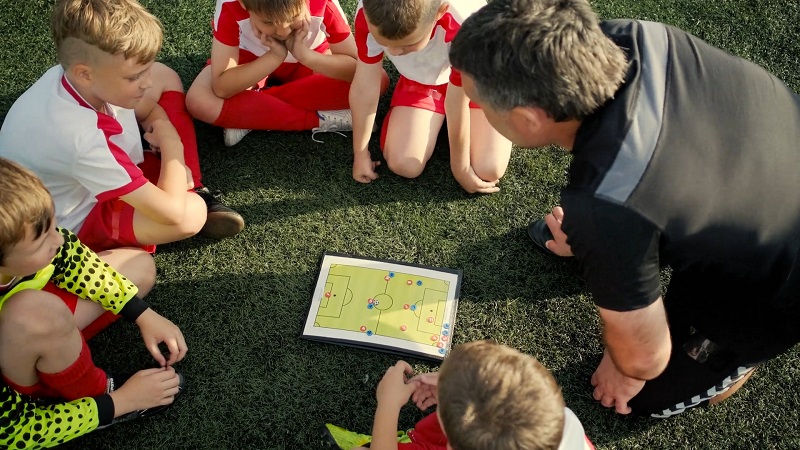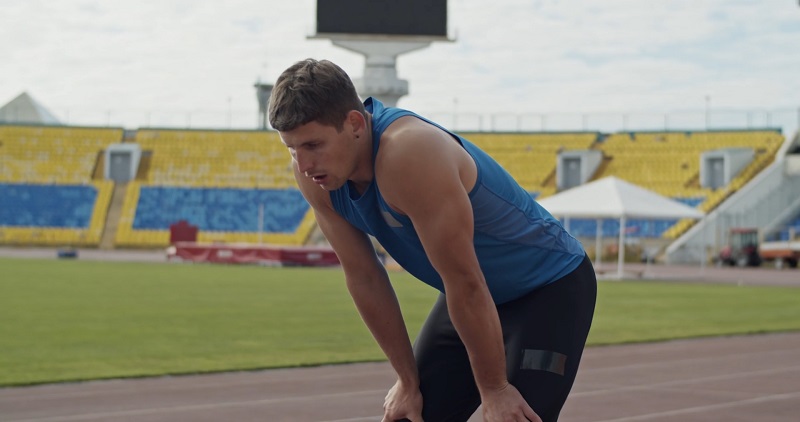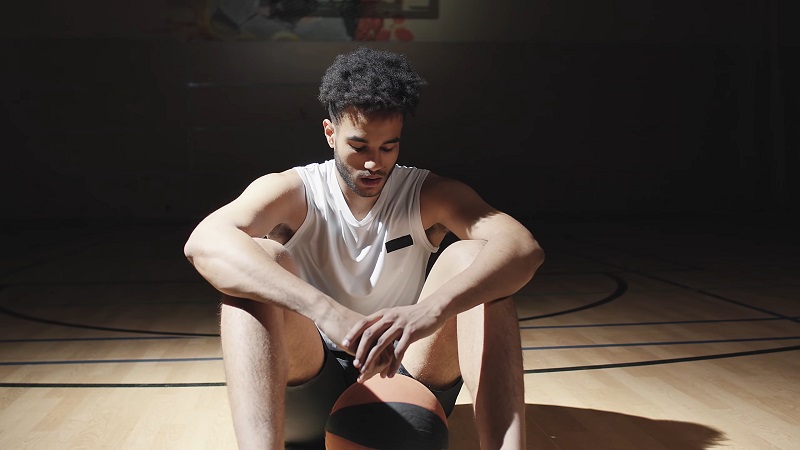Mental health challenges among young athletes are rising faster than most adults realize. Sports can be a powerful outlet, but intense pressure, burnout, and high expectations often take a toll on emotional well-being. Early support from coaches and parents can help athletes build resilience and feel genuinely seen.
On that note, here are tips for coaches and parents that should be a good support for an athlete struggling mentally.
Table of Contents
ToggleTip #1: Prioritize Humanity Over Performance

Too often, young athletes are measured by stats, trophies, or scholarship potential. It’s easy to get caught up in competition results, highlight reels, and comparisons to peers. But young and even elite athletes are also humans, with emotions, challenges, and stories far more complex than any stat sheet can show.
Support begins with a mindset shift: performance should never come before mental and physical health. A thriving athlete feels emotionally safe and respected, not just physically conditioned.
Many athletes juggle stress far outside the field of play. They may be struggling academically, especially when grades are tied to eligibility. They may also be dealing with peer pressure, bullying, or social exclusion. On top of that, they’re managing family expectations, financial hardship, or even personal grief.
Dismissing these stressors as “not a big deal” shuts the door to meaningful connection. Instead, adults must validate athletes’ emotions. A simple acknowledgment can foster trust and keep lines of communication open. You can say, “That sounds tough,” or “Thanks for telling me about that.”
The Junior Volleyball Association (JVA) urges coaches and parents to shift the metric of success toward internal growth. Encourage athletes to think about what they’re learning about themselves through sports, how they can pursue excellence without burning out, and their individuality apart from their athletic identity.
Tip #2: Create Safe Spaces for Communication

Waiting until a crisis erupts would yield results that are far worse. Therefore, ongoing, casual conversations about emotions and mental health should be part of every program to mitigate any looming risk.
Coaches can do this by asking open-ended questions like “What’s been hard lately?” or “What’s felt good?” Ask while walking laps, cooking a meal, or tossing a ball, non-confrontational environments create ease.
USA Cheer suggests weekly one-on-one check-ins that take place in observable but private environments. Doing so will make time feel intentional.
Experts also recommend choosing words carefully. This means you must avoid diagnosing or labeling. Instead, you can use phrases like, “It sounds like things have been heavy lately,” instead of rushing to conclusions. Neutral language helps reduce shame and creates a space for athletes to speak openly. This lays the groundwork for early intervention and stronger relationships.
If you’re a coach or a parent who’s looking for a helpful route to stay engaged, you can explore mental health internship options. These programs will guide you through reaching the hearts and minds of young athletes in a safe and effective approach.
Tip #3: Reduce Pressure and Unrealistic Expectations

Pressure, even when it’s subtle or well-meaning, can quickly become overwhelming for young athletes. A missed shot, a benching, or a failed qualification shouldn’t feel like a personal failure.
Constant discussions about performance metrics, scholarships, or making elite teams often add stress rather than inspiration. What’s intended as encouragement may instead be internalized as conditional love or worth.
To truly support mental well-being, adults need to shift their focus and language. Instead of reinforcing a success-at-all-costs mindset, reframe how feedback is delivered.
The praise should be centered on the athlete’s effort, resilience, and emotional growth rather than stats and trophies. Experts offer examples of what this can look like in day-to-day conversations:
- “I noticed how hard you fought to stay calm today.”
- “You kept going even when things weren’t going your way—huge progress.”
- “You bounced back quickly after that tough moment. That shows real strength.”
These types of affirmations reinforce internal values that last much longer than any scoreboard win.
JVA reinforces the idea that athletic performance and commitment doesn’t need to be all or nothing. Mental health fluctuates, so there will be times when a student-athlete is stretched thin between academics, family responsibilities, or personal struggles. During these times, their level of engagement may need to shift.
Instead of framing this as slacking or quitting, acknowledge it as self-awareness and maturity. When athletes feel trusted to honor their mental limits, they are more likely to return with renewed energy and motivation.
Tip #4: Learn the Signs and Take Action Early

It’s essential that coaches and parents know what warning signs and mental health symptoms to look for. That’s because mental health concerns don’t always shout—they often whisper. Mood swings, withdrawal, irritability, appetite changes, and disrupted sleep can all signal deeper issues.
The Positive Coaching Alliance (PCA) recommends using simple self-check tools, like asking athletes to do the ‘thumb-check’ during practices or meetings. This is when young athletes are asked to put a thumb up if they’re feeling good, thumb in the middle if everythings just fine, and thumb down if they’re suffering from a bad day. These quick insights can make a major difference.
Don’t hesitate to act. If an athlete’s behavior shifts suddenly or consistently shows signs of distress, it’s time to reach out. Contacting caregivers, school counselors, or mental health professionals is a responsible step, not an overreaction. Hotlines like 988 or the Crisis Text Line are available, but having local resources on hand helps too.
Early action can prevent long-term consequences. Hesitation is often the difference between someone getting help and continuing to suffer in silence.
Tip #5: Build a Community Support System

Support shouldn’t fall on one person’s shoulders. Mental health resilience in young athletes grows stronger when it’s reinforced by a broad and reliable network. Coaches, parents, teammates, and professionals all play vital roles in this system.
Relying solely on one trusted adult creates risk, burnout, oversight, or even unavailability during critical moments can leave the athlete feeling isolated. Emotional regulation, positive coping habits, and a willingness to seek help are all lessons learned through observation. So, it’s not enough to talk about self-care—it has to be lived.
When coaches or parents neglect their own well-being, athletes sense that instability. Burnout reduces the effectiveness of support and sets a dangerous precedent. To lead with empathy, adults must also prioritize their own wellness and boundaries.
Encourage community-based engagement through structured, inclusive activities like:
- Book clubs focused on mental health, self-growth, or teamwork.
- Group journaling sessions where athletes can share their thoughts anonymously or aloud.
- Casual movie nights that promote bonding without performance pressure.
- Wellness workshops involve breathing techniques, mindfulness, or light physical activities like yoga.
These activities extend support beyond the game and foster genuine connection. Creating emotional safe zones outside of the gym or field allows athletes to decompress and feel valued for who they are, not just what they achieve.
Final Thoughts
Supporting mental health in youth sports is not a one-time fix, it’s a continuous, shared effort. Compassionate presence, thoughtful listening, and steady encouragement shape environments where athletes feel safe, strong, and seen. Coaches and parents have the power to shift the culture.
Resources like TeenLine, Trevor Project, NAMI, and JED Foundation offer guidance, professional help, and education. Staying informed and emotionally available could be the difference that saves a young life.
Related Posts:
- How Can You Start a Career as a Running Coach?
- Lower Back Pain While Running? Here's What You Need to Know
- How To Recover From Muscle Inflammation Without Medication
- 25 Simple Running Motivation Tips To Get You Moving
- Tendonitis, Shin Splints, and Other Common Leg…
- 10 Best Running Documentaries - Inspiring Films for Runners







